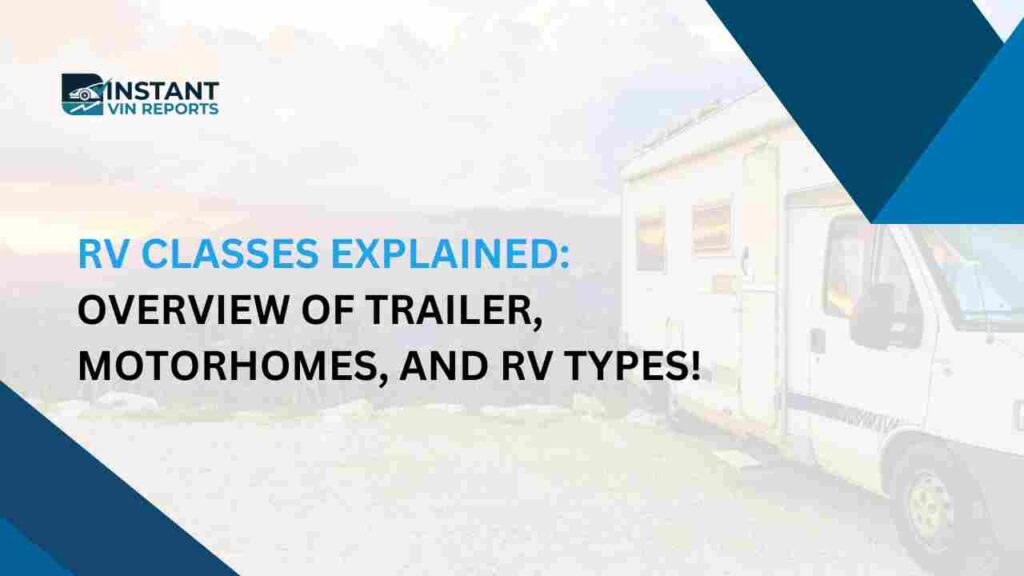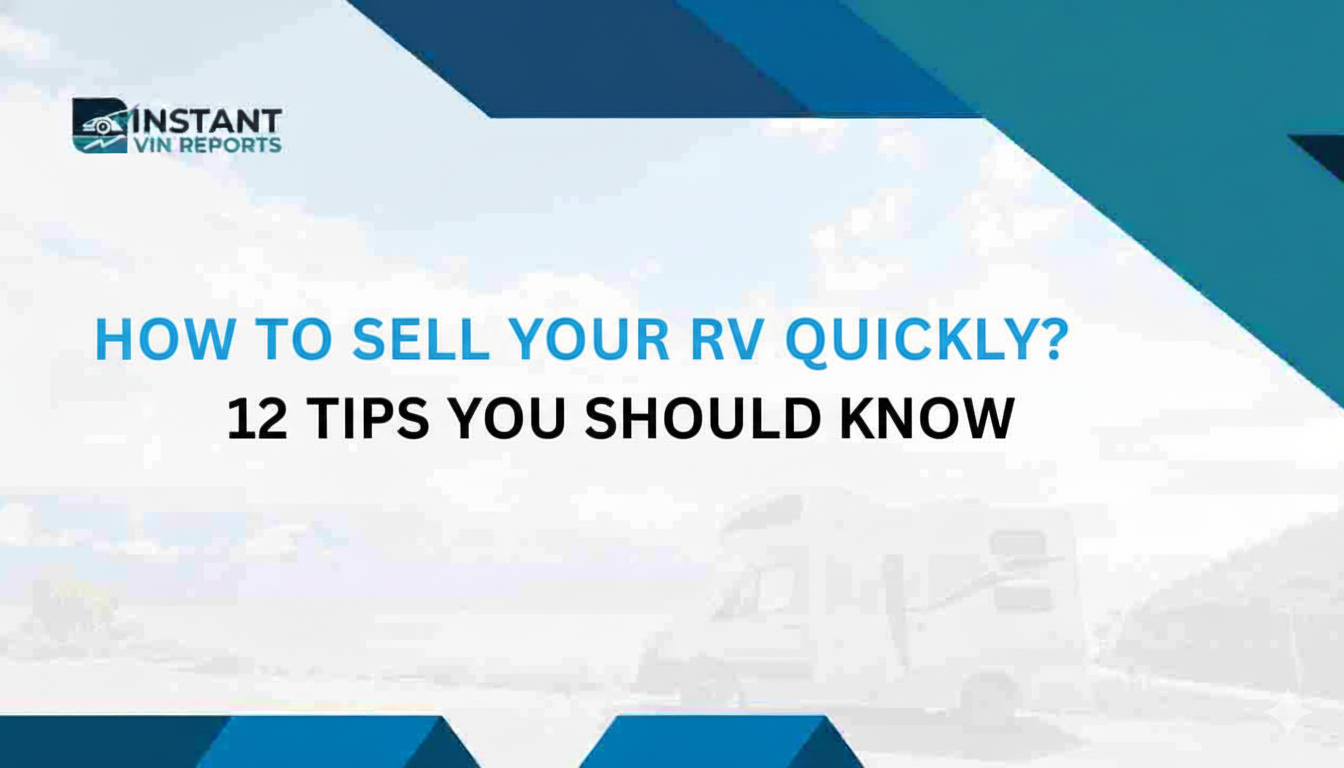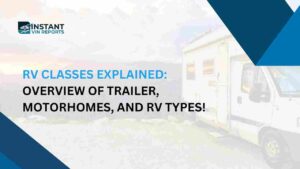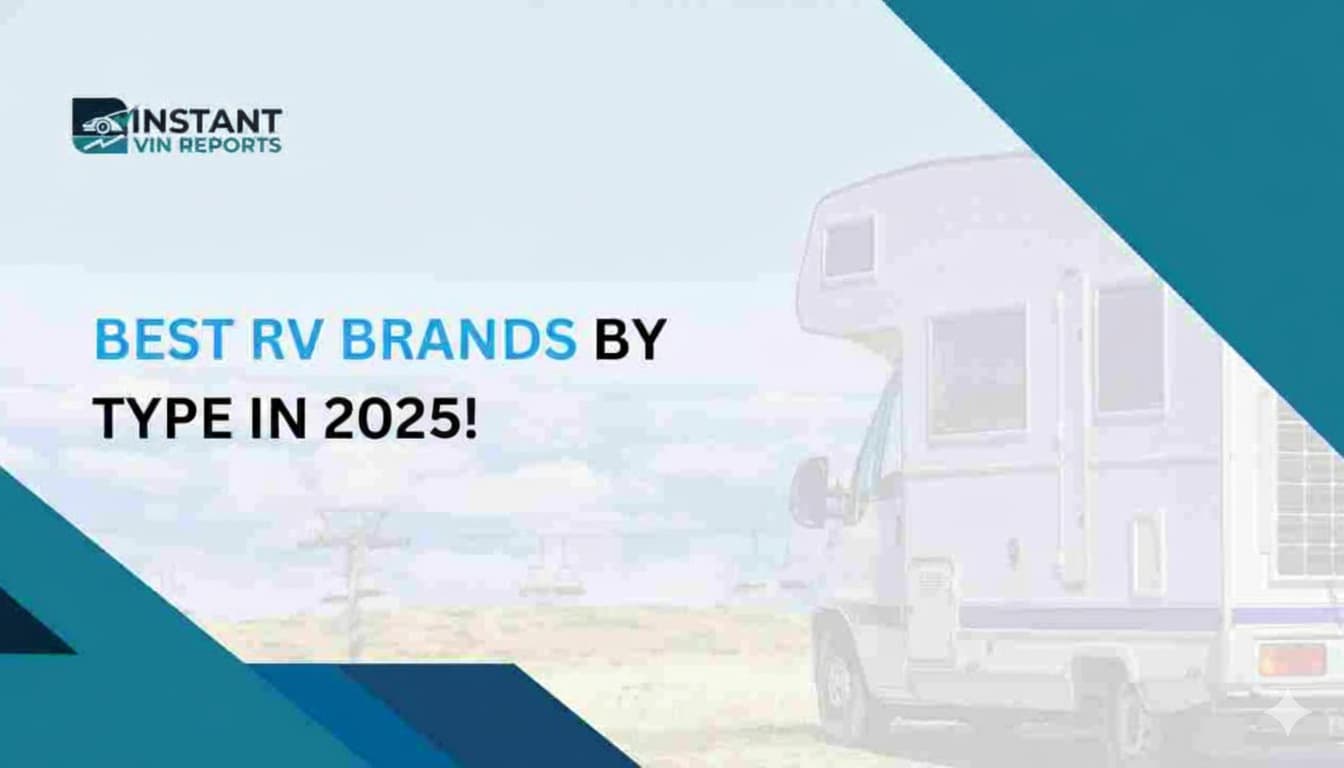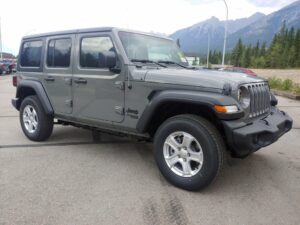If you are new to the automotive industry, choosing the right RV can be confusing. There are plenty of options on the market, and each RV, trailer, and motorhome has different specifications and features that can be adjusted to suit your needs. Picking the wrong type of RV could lead to wasting money and unfulfilled needs, but don’t worry, as this article will explain the classes of vehicles simply found in RVs.
Overview of the 6 Most Common RV Classes
There are six primary classes of RVs available on the market. Once you identify the type of vehicle you’re searching for, your choices are extensive. This article is designed to help you streamline your options and make selecting the RV that best meets your needs easier.
Class A RV
Class A RVs are ideal for families, large groups of friends, or individuals looking for a luxurious road trip. This class is known for its luxurious interior and fully equipped home, which suits long-term travel needs. It is common for the A-Class RV to have king-size beds, a fully equipped kitchen with top-notch appliances, and ample living space. However, the quality of an A-class RV is related to its price; different prices correspond to different quality.
Class B RV
A B-class RV is perfect for couples or small groups of travelers seeking a comfortable motorhome for their adventures. While smaller than A-class RVs, B-class models typically accommodate two to four people. As the smallest RV class, B-class RVs are more maneuverable than their larger counterparts, allowing them to reach more remote camping spots. Additionally, their compact size makes them more fuel-efficient, which is easier on the wallet during your travels.
Class C RV
It is kind of weird to see the RV labeled as “C-Class” when, in fact, it falls between the A and B classes. C-class RV is suitable for those looking for a motorhome with decent features and more fuel efficiency than A-class. This vehicle is easily recognizable on the road by identifying its cabs that extend longer than the cockpit; they weigh around 10,000 to 13,000 pounds. Though it’s generally heavier than the B-class, it’s still lighter than the A-class.
Travel Trailers
A travel trailer is a non-motorized vehicle that needs to be towed by a capable car or truck. They come in various sizes, allowing you to choose the best fit for your vehicle and needs. When comparing a travel trailer to a pop-up trailer, you’ll find that travel trailers are more convenient as they require minimal setup. There’s no need to fold or unfold anything before you start your outdoor adventure. Additionally, the solid construction of a travel trailer offers superior protection against the elements, making your experience more comfortable.
Fifth Wheels
Fifth wheels are the largest and heaviest type of RV available, designed to be towed with a specific kind of hitch attached to the back of trucks. If you plan to tow a fifth wheel, you’ll want a one-ton truck ready. Regarding durability, fifth wheels generally outshine travel trailers, especially for those looking to embark on a full-time outdoor adventure. Additionally, they provide a more spacious living area, which is a considerable advantage, albeit at a higher price point. Unfortunately, it will be challenging to reach a remote point due to its size.
Truck Campers
Truck campers are usually mounted in the back of pickup trucks. Though the space is tiny, they offer massive flexibility. Truck campers are suitable for individuals or couples who prioritize adventure, as the trucks can be driven anywhere, including remote areas.
Truck campers come in two varieties: lightweight popups and sturdy hard-sided ones, some with an extra space that slips out. You can choose a camper that’s easy to carry or more solid. Moreover, you can tuck the truck camper in the truck while traveling or bring it with you to the campsite. The main downside is that truck campers are small, making many people think there is little space in them.
RV Classes Comparison Table
| RV Type | What It Looks Like | Size | Capacity | Driving/Towing | Setup | Features | Cost | Miles Per Gallon | Storage Space | Parking |
| Class A | Big, almost the same as a bus | 25-45 feet | 4-8 people | Feels like driving a bus | Easy, just drive and park | High class with the best amenities and features | $60k-$500k | 6-10 MPG | Plenty | Hard due to its massive size |
| Class B | It is as small as a van | 16-24 feet | 2-4 people | It drives like a van | Easy, just drive and park | Basic amenities | $50k-$150k+ | 15-20 MPG | Limited | Easy to park everywhere |
| Class C | Medium, with a cab over the cockpit | 20-32 feet | 4-8 people | It feels like driving a truck | Easy, just drive and park | Medium depends on the model | $50k-$150k+ | 8-13 MPG | Medium Storage | Medium difficulty |
| Travel Trailer | Towable RV | 12-35 feet | 2-8 people | Must be towed with a large SUV or truck | It may need leveling and unhitching | Depends on the model | $10k-$50k+ | 10-20 MPG | Depends on the trailer | Depends on the tow car |
| Fifth Wheels | Pulled by a truck, raised front | 25-40 feet | 4-8 people | It must be towed with a strong track | It may need leveling and unhitching | High class with the best amenities and features | $20k–$100k+ | 10-18 MPG | Ample | Big, hard to park |
| Truck Campers | RV that sits in the truck bed | 8-11 feet | 2-4 people | It needs a truck with a bed | It fits into the truck bed | Basic to medium features | $8k-$40k+ | Depends on truck | Small | Easy, just like a truck |
Motorhome RV Classes
Motorhome RVs are self-driving vehicles equipped with their own engine and driving chassis, making them excellent for road trips. Their compact size ensures that everything is easily accessible while you’re on the go, and setting up is a breeze. However, if you don’t tow a smaller vehicle behind, you might find yourself stuck at your destination without convenient ways to explore the local area once you’ve parked your motorhome.
Class A RV
Class A RVs are the largest, almost the size of a bus. They can range from 20 to 45 feet long, and some can accommodate up to ten people, which is great for a family or a large group of friends. This motorhome can be gas or diesel-powered; either way, they come in a hefty punch regarding fuel bills. It might not be fuel efficient due to their size, and the vehicle needs a lot of fuel.
Class B RV
Class B RVs, often camper vans, are the smallest RV options. Their compact size makes them ideal for couples or small groups of friends. Compared to larger RV classes, they are more agile, allowing them to access remote locations easily.
Although they may lack the living space found in other RVs, Class B models still feature essential amenities such as a kitchen, small bedrooms, and storage options, with some even including a separate bathroom. One significant advantage of these vehicles is their fuel efficiency; many Class B RVs can achieve up to 28 miles per gallon, making them a smart choice for travel.
Class B+ RV
This subtype of the B+ RV is classified in size between the B and C classes. It might feature slide-outs and have a little more living space than the basic B-class.
Class C RV
If you want a Class C RV that is relatively easier to drive and more fuel efficient than the A-class but has the same amount of space, then the C-class is the right one for you. The C-class is built on a regular van chassis, making driving comfortable, unlike the A-class RV, which is massive and built like a bus.
Most Class C RVs have a bed over the cab, making good use of space. They also have everything you need, like a kitchen, bathroom, and usually a generator. Class C RVs are generally cheaper than Class A models. While they aren’t as fancy as Class As, they still offer a comfortable way to travel at a lower cost.
Super C RV
The Super C RV is an exciting new addition to the RV market. Similar to traditional C-class RVs, it is built on a semi-truck chassis instead of a van chassis. One notable feature of the Super C-class is that it offers a more luxurious experience than the standard C-class models.
Towable RV Classes
Regarding towable RVs, it’s essential to have a reliable and robust vehicle for towing. For fifth-wheels and truck campers, a truck with at least a ton or half-ton capacity is necessary to handle the job safely.
Towable RVs offer a straightforward experience. You can easily use the truck for regular driving while on your trip. However, camping and hooking up the trailer can sometimes be a hassle.
Pop up trailer
Pop-up trailers are small and easy to tow, even with a smaller truck or SUV. They expand with canvas sides, giving you plenty of interior space.
The downside is that you must manually set them up and pack them away, which can be a hassle. The canvas sides don’t keep out heat or cold very well, and most pop-up trailers don’t have bathrooms.
Travel Trailer
Travel trailer or bumper pulls attached to the back of the truck come in many different sizes to fit your needs and adjust to the truck’s strength. The travel trailer is easier to set up than the pop-up trailer since there is no manual labor involved, such as folding and unfolding the trailer; also, their hard sides have better weather protection.
However, the furniture and cabinets in travel trailers aren’t always very sturdy or comfortable. Bigger trailers need a strong truck to tow them, and they can be harder to tow than pop-ups or fifth wheels because they often sway.
Fifth Wheels
Fifth Wheels are the largest RVs available on the market, but they are also the heaviest vehicles, and they need a specific type of hitch to be towed. If you buy a fifth wheel, be ready to provide a one—or half-ton truck to tow it. Regarding durability, fifth wheels are better than travel trailers; among other things, they are more suitable for long-term outdoor adventures.
Truck campers
Truck campers are small, flexible living spaces that sit on the backs of pickup trucks. They’re great for one or two people who love adventure because they can be taken anywhere your truck can.
You can choose between lightweight pop-up campers and sturdier hard-sided ones, some with extra space that slides out. You can either keep the camper on your truck or remove it and leave it at your campsite.
The main downside is the limited space, but many people think the freedom they offer makes up for it.
Hybrid Trailers
Hybrid trailers combine the features of travel trailers and pop-up camper trailers. Both have hard sides but include one or more soft-sided pop-outs, usually for beds. The pop-outs can be folded during bad weather, such as heat, cold, wind, or rainy days.
Some people prefer hybrid trailers because they have extra living space without adding much weight; on the other hand, some people prefer traditional trailers.
A-Frame Trailer
This camper is one of the unique types of “pop-up” campers. It has two hard roof panels that fold flat when traveling but can pop into an “A” shape when camping. These trailers are easy to tow because they’re flat when folded but still offer the protection of hard sides. The downside is that you must set up and pack away the interior every time you move, which can take time and effort.
Toy Haulers
Toy haulers are RVs with a built-in garage for carrying large items, such as ATVs or SUVs, for adventure. The garage is usually separated from the vehicle, with its kitchen and shower. Thus, many have their own folded beds in the garage area. Please remember that Toy Haulers’ garages are known for having poor-quality insulation, so you’ll need to prepare for the temperature change.
How to Decide Which RV Class is Best for You
When choosing the right RV for your needs, it’s important to identify which categories below best suit you. Take your time to select an RV that meets your requirements, as each type has its advantages and disadvantages. Here are the things you should consider before choosing the RV
Space
Class A RVs offer the most spacious accommodations and luxury in their category. They are ideal for families and large groups to spend extended periods outdoors.
In contrast, Class B RVs are the smallest type, perfect for couples or solo travelers. While they may not provide the same level of luxury as Class A RVs, they still offer decent features and amenities to facilitate outdoor adventures.
Class C RVs balance the two, combining Class A’s spaciousness with Class B’s maneuverability.
Cost
A-Class RVs require the highest cost due to their massive size; if you are on a budget, we suggest you choose the B-class or C-class as they are more cost-efficient and don’t need a lot of fuel.
Maintenance
All RV classes need regular maintenance and engine care to maintain their performance. However, towable trailers do not require maintenance as much as regular RVs.
Living duration
For extended stays, larger RVs or fifth wheels work best. Compact models suit weekend trips.
Conclusion
Now that you understand the distinctions between A, B, and C class RVs, towable RVs, motorhome RV classes, and truck campers, you likely have a clear idea of what type of RV you want to acquire. However, it’s wise to check the RV VIN and the RV’s title before making a purchase—especially with used RVs—to avoid scams and any potential issues that could crop up down the line.
Frequently Asked Questions
What is the easiest RV size to drive?
Class B RVs (17-25 feet) are ideal for ease of driving. Class C RVs (26-35 feet) require more attention due to their increased length, while Class A RVs (30-45 feet) demand the most experienced drivers.
What is the best RV for cold season weather?
When winter camping, selecting an RV with proper winterization is important. The Northwood Arctic Fox Edge 27SX, Lance trailers, Winnebago EKKO Sprinter, Bigfoot RV 2500 Series 10-4, Forest River Arctic Wolf Fifth Wheels, and Keystone Montana are examples of models designed to deliver reliable performance in freezing temperatures.
What is the largest RV you can drive without CDL?
Most standard driver’s licenses are sufficient for Class A RVs under 26,000 pounds and 40 feet. However, larger Class A motorhomes may require specialized training, such as an RV safety course or a Commercial Driver’s License (CDL)


